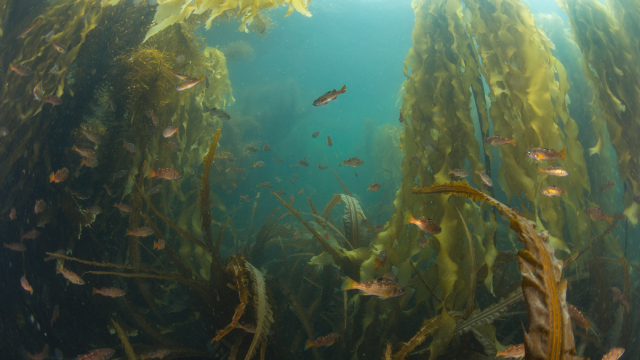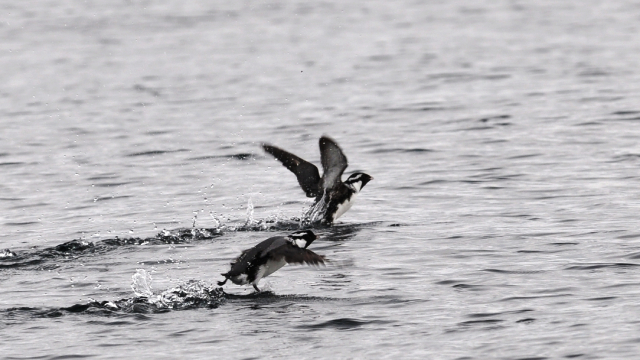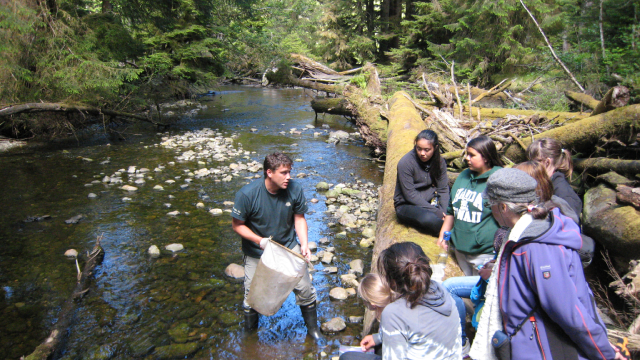
Nature and science
Gwaii Haanas National Park Reserve, National Marine Conservation Area Reserve, and Haida Heritage Site
Pacific temperate rainforest sweeps from sea level up the slopes of the San Christoval Mountains that form the backbone of Gwaii Haanas. At lower elevations, rain and moderate temperatures help to nurture dense, mossy forests of immense western red cedar, western hemlock, and Sitka spruce trees.
The sea around Gwaii Haanas teems with life. These waters are home to salmon, herring, halibut, rockfish, crab, seastar, sea urchin, octopus, and numerous other species.
Ecosystem restoration
.jpg)
Living Landscapes of SG̱ang Gwaay
Exploring the history of the village and environmental stewardship after windstorm damages a changing climate.
X̱aayda Gwaay.yaay Ḵuugaay Gwii Sdiihltl’lx̱a: The Sea Otters Return to Haida Gwaii
Collaboratively planning for the impacts of sea otter re-emergence on ecosystems and communities.
Chiix̱uu Tll iinasdll: Nurturing Seafood to Grow
Restoring kelp forests benefiting coastal communities and ecosystems in Gwaii Haanas.
Llgaay gwii sdiihlda: Restoring Balance
Restoring natural and cultural plant species decimated by years of deer browsing.
SG̲in X̲aana Sdiihltl’lx̲a: Night Birds Returning
Recovering populations of Ancient Murrelets and other seabirds through habitat restoration in Gwaii Haanas.
Yahguudang Dlljuu: A Respectful Act
Restoring streams and old-growth forests to honour the History of Lyell Island.Conservation
Protecting the natural heritage of Gwaii Haanas is a key management goal and will ensure that the ecological integrity of Gwaii Haanas is maintained.
Environment
Gwaii Haanas covers approximately 1,500 km2 of land, including the southern end of Moresby Island and over 200 smaller islands and islets.
Animals
Many of the species in Gwaii Haanas and the Haida Gwaii archipelago are endemic (unique) and are found nowhere else in the world.
Plants
Pacific temperate rainforest sweeps from sea level up the slopes of the San Christoval Mountains, which form the backbone of Gwaii Haanas.